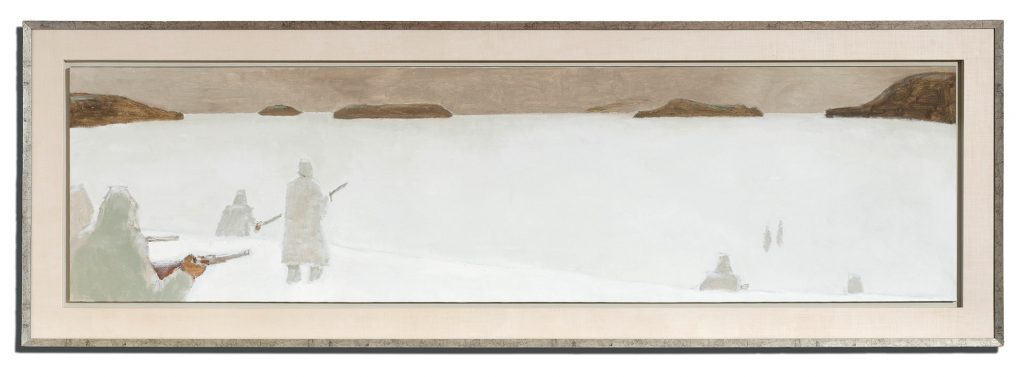Provenance
Mira Godard Gallery, Toronto
Galerie Jean-Pierre Valentin, Montreal
Private Collection, Montreal
Literature
Jacques Thériault, ‘J.-P. Lemieux s’explique sur sa nostalgie’, “Le Devoir”, Montreal, 18 September 1971, page 11
Michèle Grandbois, “Jean Paul Lemieux: Life & Work” [online publication], Art Canada Institute, Toronto, 2016, pages 54, 60, 63
A key figure of Canadian modernity, Jean Paul Lemieux was an astute observer of the milieu in which he lived. His works are a reflection patiently developed over more than seventy years of collective actions that stirred up the art world in this country. From the end of the 1920s to the artist’s death in 1990, the direction of his pictorial oeuvre was rooted in the free expression of his world vision, imbued with Nordic sensibility, melancholy and concern for the future of humanity.
Lemieux’s realm was the figurative; therefore, he was detached from the immense wave of abstraction that rolled through North America in the 1940s and 1950s. During these decades and the years that followed, Lemieux remained faithful to the figurative, viewing abstract art as the expression of a society in decline. From his perspective, the work of his contemporaries illustrated the stressed, mechanistic quality of the time they were living through and the frightening future it portended. “An anxious era will not produce tranquil art,” Lemieux stated. “Painting today is in transition. It is tormented, disturbed, and seeking, like contemporary humanity, new modes of expression.”
Lemieux carried his surrounding environment deeply within himself. “The world around me only interests me in as much as it allows me to paint my inner world,” he confided in 1971. Nearing his 70th birthday, the artist withdrew from modern life. Resisting the prevalent scientism, in which he saw a threat to the future of humankind, he drew much of his inspiration from memories of a bygone era in which Quebec traditions, customs, and popular and religious beliefs gave life and structure to his community.
Empty spaces and a bare horizon line crossing a plastic, flat field were among the key features of Lemieux’s oeuvre, beginning during his classic period of the late 1950s. Michèle Grandbois elaborates, writing that “this purification of imagery would develop further as the painter began to compose pictures using long diagonals, creating an unstable equilibrium. His deserted landscapes, most frequently staged in the winter, are charged with feelings of time passing, of death, of the human condition, and of the loneliness and smallness of human beings before the infinite horizons of the vast landscapes of Canada.”
“La chasse aux phoques” presents Lemieux’s quintessential subject matter and panoramic format. Rifles point toward an invisible prey hidden amid a blanket of freshly fallen snow. The hooded hunters, their backs turned to the viewer, flank each side of the pictorial space, creating a kind of symmetry echoed by the barren islands in the distance. The feeling of vastness reflects Lemieux’s wonder and obsession with human nature and wilderness.
Up until the late 1950s, Lemieux had painted directly from nature and often outdoors. He then switched to working exclusively from inside his studio, without models, and using only daylight for illumination. The artist declared: “I am painting … an interior world. I have stored up a lot of things.” He elaborated on his spontaneous approach that stemmed from his imagination, stating, “You are guided by the picture much more often than you guide it. And that can lead to results completely unlike what you may have intended or planned.”




